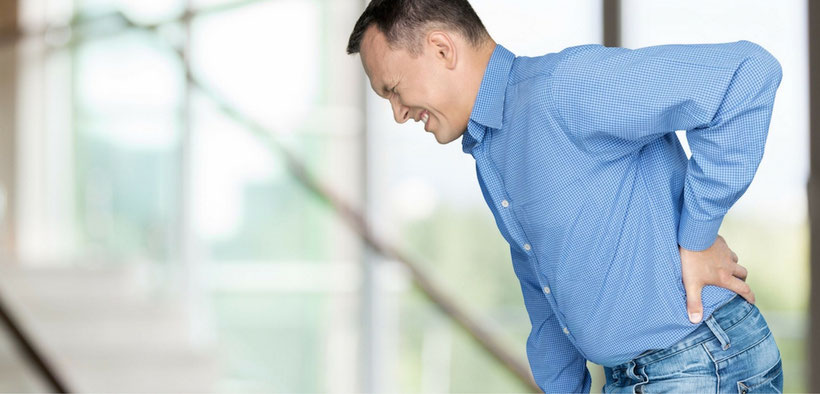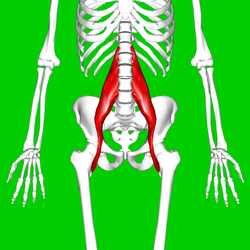Guest Post: Dr James Allen

An overactive or weak Psoas muscle could explain your lower back pain
All too often many of us experience aches and pains throughout the body. One of the most common problems that Chiropractors see in practice is lower back pain. If you find yourself continually searching for an answer for that nagging back ache it may be time to investigate whether you have an overactive or weak psoas (also referred to as iliopsoas) muscle.
Sure, the psoas (soh-ahy) might be hard to pronouce, however it is without doubt one of the most important muscles in your lower back and pelvic region.

Image: the psoas muscle. Source: Wikipedia.
What does the Psoas do?
It’s one of the deep stability muscles that provides support to your spine and pelvis. The psoas is quite unique given it provides a direct connection between your lower limb and spinal column.
Your psoas muscle assists you in performing a variety of daily activities and tasks such as walking, running and achieving normal posture.
Chiropractic care for tight hip flexors
Palpation of this muscle group can be rather uncomfortable. A Chiropractor may apply pressure in the pelvic inlet area or laterally to the abdominal muscles to help release a tight or overactive psoas. This is commonly done for athletes in addition to stretches, although it should always be done by a soft tissue professional with expertise in psoas release.
Besides direct palpation, a musculoskeletal professional may also assess flexibility through a variety of positions and stretches. Following this your practitioner may recommend specific home exercises to assist your management and current problem.
The consequences of muscle imbalance
Muscle imbalances can often cause the body to compensate in one or multiple other areas. This can lead to injury and pain. Some people are even diagnosed with psoas syndrome or iliopsoas tendonitis. These ailments cause pain in the hip and lower back area.
Symptoms of psoas problems may include discomfort, pain and aches in the front hip socket, restriction in the hip socket, restriction moving the thigh backward, deep pelvic pain or lower back stiffness.
If you experience one or multiple signs such as these then it is important to consult with a Chiropractor for a specific assessment.
2 things to look out for
There are two common behaviours that typically cause a weak psoas: prolonged periods of sitting and bad posture. As already highlighted a weak psoas can lead to lower back problems.
Sitting can cause the psoas, iliopsoas and rectus femoris muscle groups to remain in a shortened position for extended periods of time. When this occurs, these muscles get used to this shortened state and that makes them tight and overactive. Because these muscles are attached to the pelvis and lumbar spine, this shortening or tightening may cause a forward tilt of the pelvis and weakness in the gluteal muscles.
All of these factors contribute to the development of lower back pain and further injury.
Take Action Today
If you want to learn more about spinal health or to book a chiropractic check up, please contact Lyons Road Family Chiro today on (02) 9819 6182.
Share this page
Do you like this article? Please feel free to share it with your friends and family. Simply reference this page or www.chiropractordrummoyne.com.au to use.
About Dr Paul Calladine B.Sc.(Biol.), B.Sc.(Anat.), M.Chiro. (Gonstead Diplomate) and Lyons Road Family Chiropractic.
Lyons Road Family Chiro and Dr Paul (Chiro) have been serving the health care needs of Sydney's Inner West and Drummoyne communities for over 24 years. Paul is originally from Canada and has obtained high levels of tertiary qualifications from both Canada and Australia. Paul is a wealth of information on all things natural, on fitness, long term health, nutrition and of course, chiropractic.







Write a comment